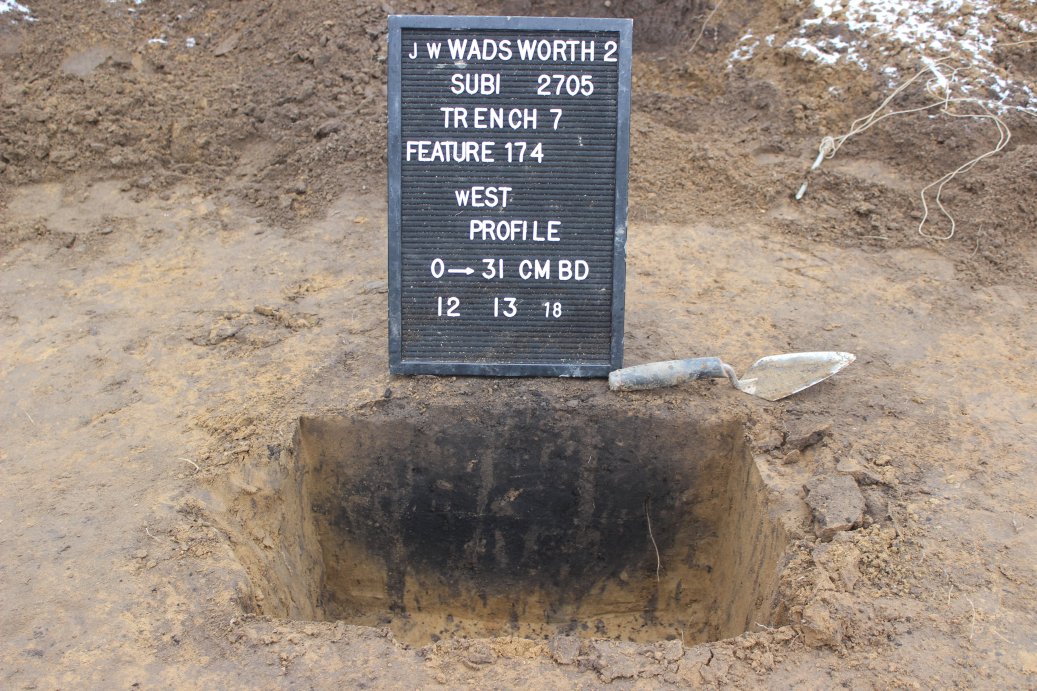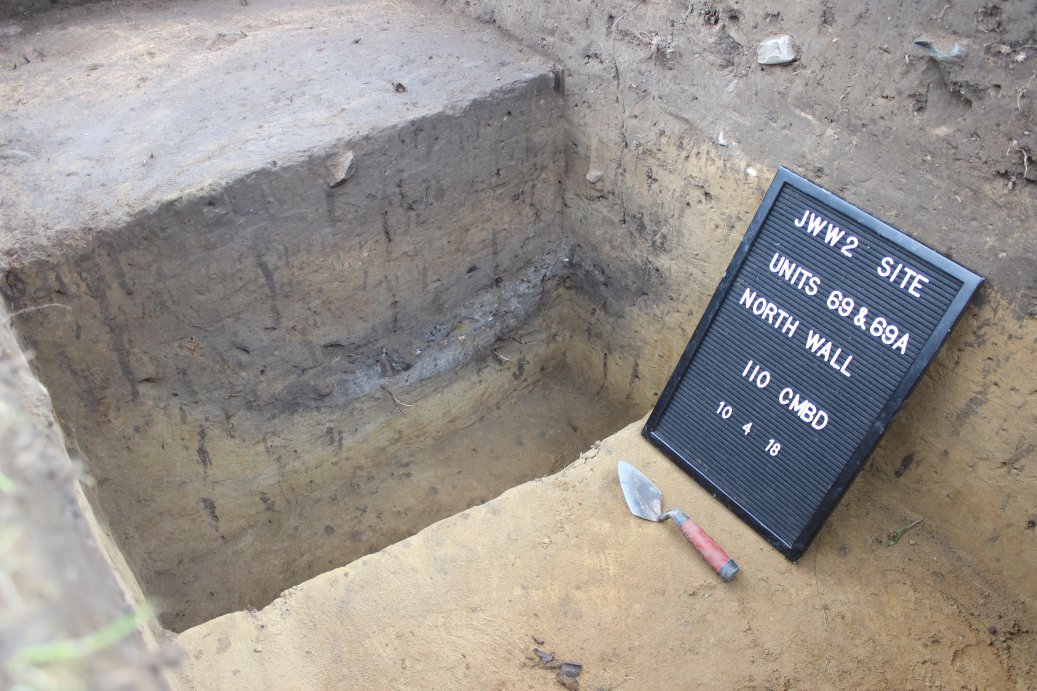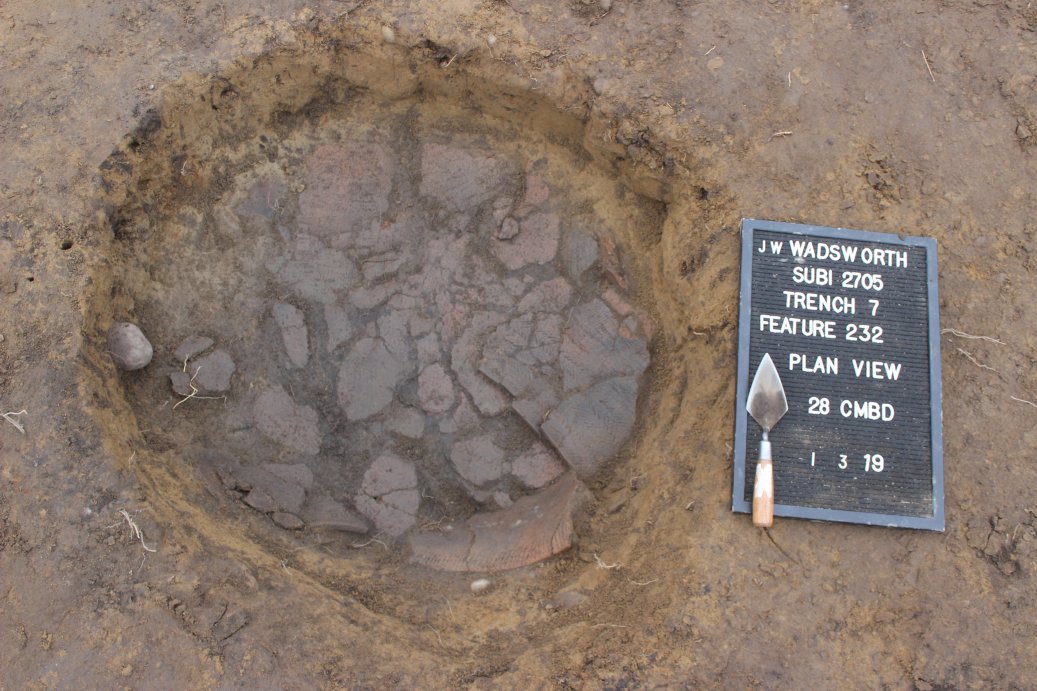Post molds were the most commonly identified feature at the site, though no pattern was observed to indicate a house, palisade, or other large structure. Twenty smudge pits were identified during site investigations, most of which were clustered in a portion of the site that yielded relatively little cultural material. Radiocarbon dates and diagnostic material culture demonstrated that the smudge pits dated to throughout the site’s use, from the Late Archaic through the Historic Periods. Much of the site’s cultural material was found in 15 large storage pits, of which 14 dated to the early Late Woodland Period. The remaining pit dated to the Late Archaic Period. The storage pits were very rich in cultural material, including butchered animal bones, stone material culture, pottery sherds, and botanical remains. Four of these pits have a date range of AD 1048-1217.
A Late Archaic smudge pit.
An early Late Woodland storage pit.
Pottery-Lined Features
One of the most interesting feature types identified was a group of four large pit features that were lined with pottery sherds. The deliberate placement of sherds around the base and/or walls of the feature was evident though the linings were in varying stages of collapse. One pit, Feature 232, had a completely lined base and very large sherds covering about 50% of the wall, with the rim sherds placed around the upper margin of the pit in a possible decoration or approximation of the pottery vessel’s original appearance. The sherds in this feature and most of those observed in the other pits were oriented with their interior surfaces facing up and their exterior surfaces pressed into the soil. The only sherds in Feature 232 that were lying exterior side up appear to have fallen inward from the wall. The other features had more degraded linings, with one having only a few sherds remaining along its walls. One of the interesting characteristics of these features is that they were former storage pits that had layers of dark, refuse-rich soil in the bottom. It is possible that the pottery was installed as a tidy way to convert the refuse pits back to their original use as storage pits. Two of these features were dated; they date to the same period as the dated unlined storage pits. The pottery-lined features appear to be part of a very rare phenomenon; extensive research by PAF identified only two similar cases of these features and they are in Ontario.
Partially collapsed pottery lining in a storage pit.


